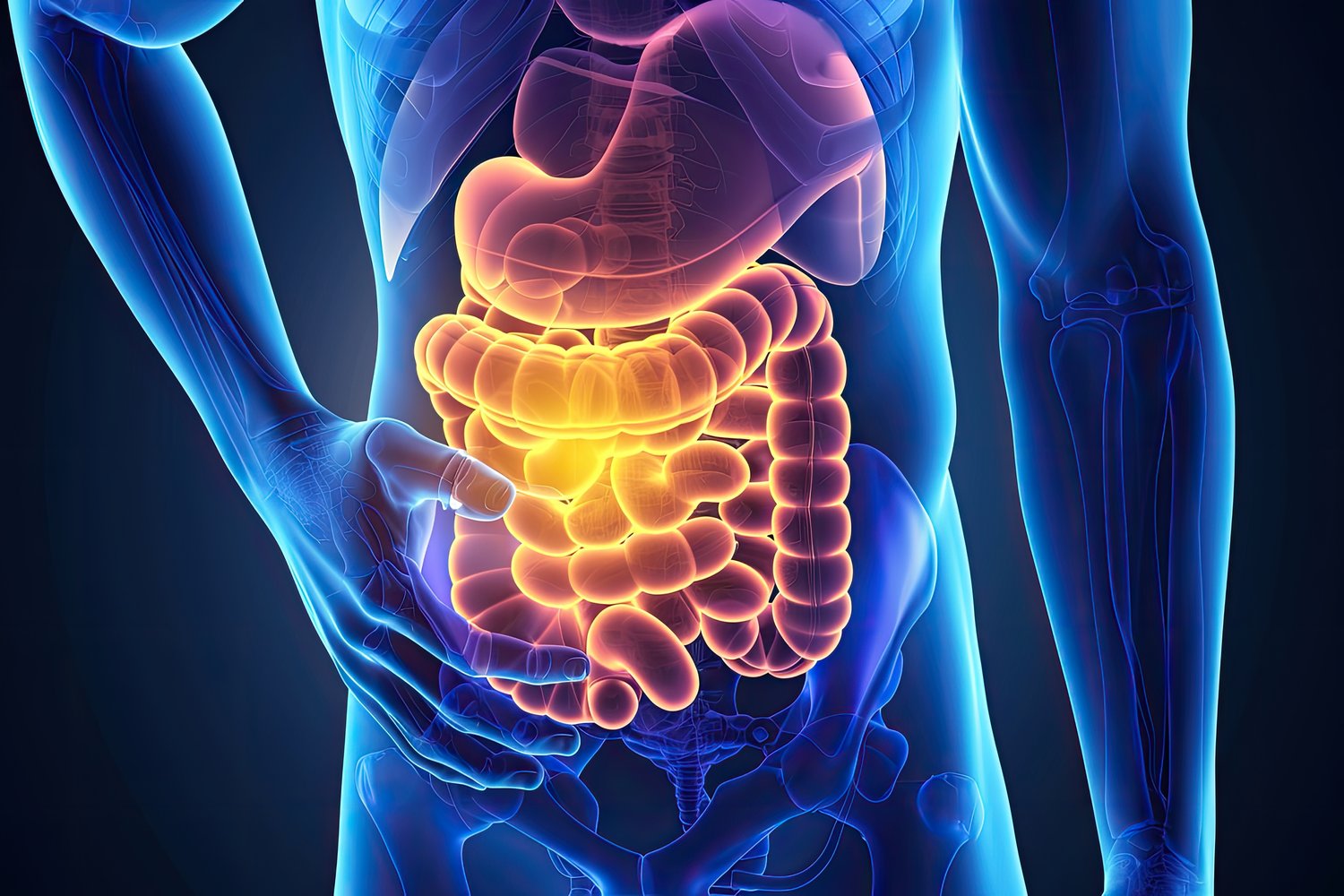Understanding Crohn’s Disease: A Comprehensive Overview
Crohn’s disease is a type of Inflammatory Bowel Disease (IBD) that causes chronic inflammation in parts of the digestive system. This lifelong condition can lead to a range of symptoms, including painful cramping, diarrhoea, weight loss, and fatigue. It can significantly impact an individual’s quality of life, with some experiencing symptoms that extend beyond the digestive system, known as extraintestinal manifestations.

What is Crohn’s Disease?
Crohn’s disease is a chronic inflammatory condition affecting the gastrointestinal (GI) tract. It can cause intense abdominal pain and cramping and may impact any part of the digestive system, from the mouth to the anus. The most common site of inflammation is the ileum, the end of the small intestine. When the ileum is inflamed, the condition is referred to as ileitis.
There is no cure for Crohn’s disease, but with appropriate treatment, many patients can manage their symptoms and lead a relatively normal life. Treatment can reduce inflammation, alleviate symptoms, and help prevent complications such as bowel cancer, osteoporosis, or iron deficiency caused by poor nutrient absorption.
What Causes Crohn’s Disease?
First described by Dr. Burrill Crohn in 1932, the exact cause of Crohn’s disease remains unknown. It is believed to be an autoimmune condition in which the immune system mistakenly attacks cells in the gut. Genetics are thought to play a role, as the condition tends to run in families.
Factors that may trigger the onset of Crohn’s include environmental triggers, such as infections, although these links are not yet fully proven. Crohn’s disease typically develops between the ages of 15 and 40, but there is another peak between 50 and 60 years old. Smoking is also a known risk factor, as it can exacerbate symptoms, and smokers are more than twice as likely to develop the condition.
Crohn’s Disease Symptoms
Symptoms of Crohn’s disease can vary from mild to severe and may include:
-
Diarrhoea
-
Abdominal pain and cramping
-
Blood in stools
-
Fatigue
-
Weight loss
-
Anal symptoms, such as skin tags, fistulae, or abscesses
Extraintestinal manifestations, which occur outside the digestive tract, can include:
-
Joint pain (affecting large joints like the ankles or knees)
-
Painful lumps under the skin (erythema nodosum)
-
Mouth ulcers
-
Eye inflammation (red or painful eyes)
-
Osteoporosis
Symptoms may occur intermittently, with periods of remission followed by flare-ups. When active inflammation recurs, these flare-ups can happen without warning.
Types of Crohn’s Disease
While there aren’t different types of Crohn’s disease, the condition is classified based on the location of inflammation in the GI tract:
-
Gastroduodenal Crohn’s: Affects the stomach and upper small intestine.
-
Ileitis: Inflammation of the last section of the small intestine (ileum).
-
Ileocolitis: Inflammation of both the ileum and the colon.
-
Jejunoileitis: Affects the middle to the end of the small intestine.
How is Crohn’s Disease Diagnosed?
Crohn’s disease can be difficult to diagnose as it shares symptoms with other GI conditions. Diagnosis typically involves:
-
Symptom history: Your GP will ask about symptoms, diet, medications, and any family history of IBD.
-
Physical examination: A doctor may examine the abdomen and may take blood or stool samples to check for infection or inflammation.
-
Specialist referral: If Crohn’s disease is suspected, a gastroenterologist may conduct further tests, such as:
-
Colonoscopy: A camera is inserted into the bowel to check for signs of Crohn’s, such as inflammation or ulcers.
-
Biopsy: Small tissue samples are taken from the bowel for further analysis.
-
MRI or CT scans: These scans can provide a detailed view of the bowel, and a barium sulfate drink may be required to help the bowel show up clearly on the scan.
-
Treatment Options for Crohn’s Disease
While there is no cure for Crohn’s disease, treatment focuses on reducing inflammation and managing symptoms. Options include:
-
Medications: Steroids are commonly prescribed to reduce inflammation and induce remission. Steroid-sparing agents are often used as maintenance therapy to reduce long-term steroid use. In more severe cases, biological therapies may be recommended to target specific parts of the immune system.
-
Lifestyle changes: Quitting smoking is one of the most important lifestyle changes for managing Crohn’s disease. Diet may also need adjustment, particularly if certain foods aggravate symptoms, but these changes should be guided by a healthcare professional to avoid nutrient deficiencies.
-
Surgery: In some cases, surgery may be necessary to remove damaged sections of the bowel or treat complications like fistulae or strictures.
